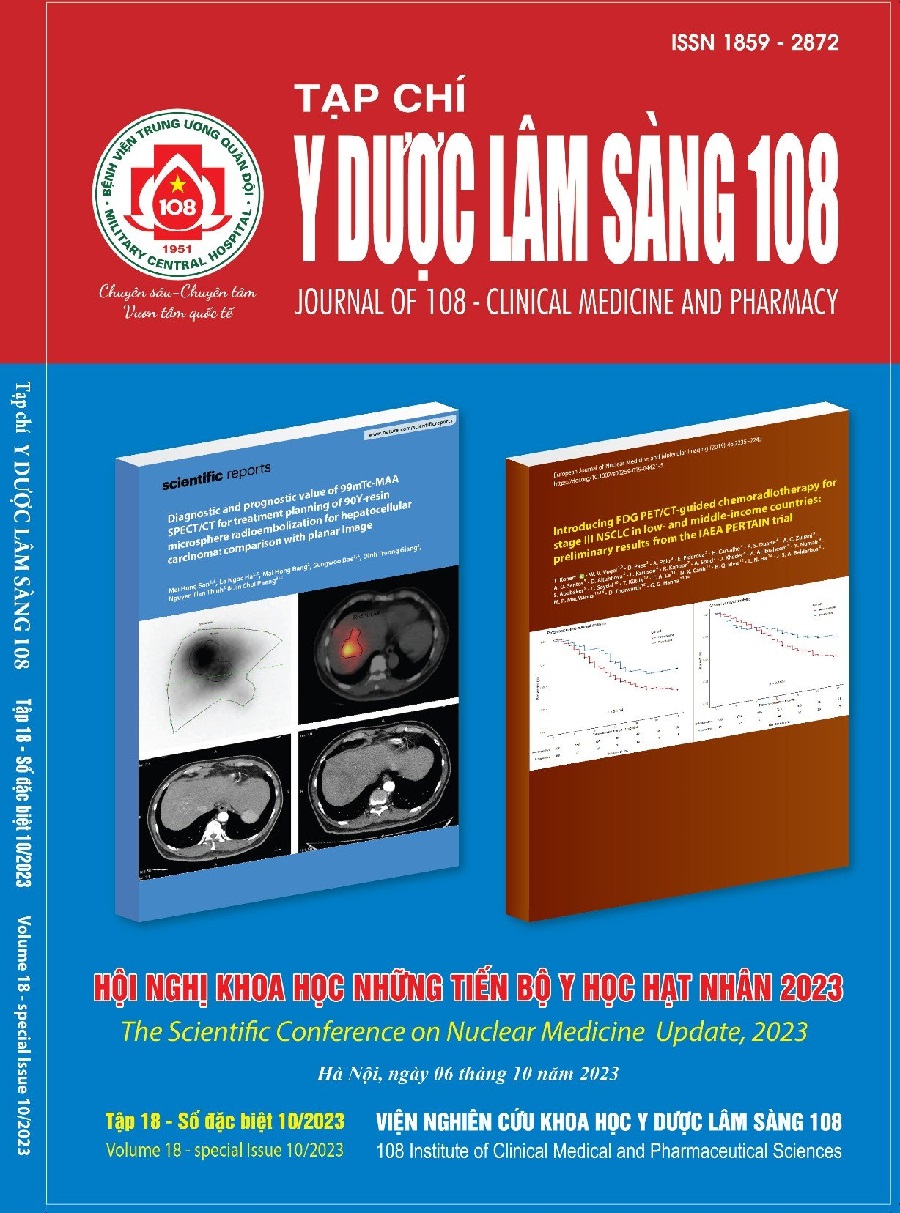The role of three-phase bone scintigraphy with SPECT/CT in evaluation of joint replacement patients in Da Nang Hospital
Main Article Content
Keywords
Abstract
Objective: To describe the clinical and subclinical characteristics of patients after joint replacement who underwent three-phase bone scan at Danang Hospital and evaluation of the role of three-phase bone scan method with SPECT/CT in monitoring patients after joint replacement. Subject and method: 32 patients after joint replacement who underwent three-phase bone scan with SPECT/CT Hawkeye 4 produced by GE at the Department of Medicine, Danang Hospital from 9/2016 to 10/2020. Method: A cross-sectional descriptive study. Result: Mean age: 69.88 ± 7.80. Female/male ratio: 23/9. Pain is the most common symptom. The white blood cell count and CRP concentration were mostly incresed. There were no abnormal changes in the X-ray picture. The image of joint loosening accounts for the highest proportion. Most of the knee scintigraphy shows abnormalities. Sensitivity: 83.33%. Specificity: 75%. Accuracy: 81.25%. Positive predictive value: 90.91%. Negative predictive value: 60%. Conclusion: Three-phase bone scintigraphy is a simple method making it easy to perform with its high sensitivity and positive predictive value. Therefore, it plays a crucial role in monitoring patients after artificial joint replacement.
Article Details
References
2. Mai Trọng Khoa (2012) Y học hạt nhân sau đại học. Nhà xuất bản Y học, tr. 90-97, 252-257.
3. Aliabadi P, Tumeh SS, Weissman BN, McNeil BJ (2009) Cemented total hip prosthesis: radiographic and scintigraphic evaluation. Radiology 173: 203-206.
4. Yoldas B, Cankaya D, Andic K, Kilic E, Bingol O, Tecirli A, Toprak A, Tabak Y (2016) Higher reliability of triple-phase bone scintigraphy in cementless total hip arthroplasty compared to cementless bipolar hemiarthroplasty. Annals of Medicine and Surgery 10: 27-31.
5. Graute V, Feist M, Lehner S et al (2010) Detection of low-grade prosthetic joint infections using 99mTc-antigranulocyte SPECT/CT: Initial clinical results. Eur J Nucl Med Mol Imaging 37: 1751-1759.
6. Jansen JA et al (2012) The role of nuclear medicine techniques in differentiation between septic and aseptic loosening of total hip and knee arthroplasty. Tijdschrift Voor Nucleaire geneeskunde 34(4): 988-994.
7. Love C, Tomas MB et al (2001) Role of Nuclear Medicine in Diagnosis of the Infected Joint Replacement. RadioGraphics 21: 1229-1238
8. Palestro CJ (2014) Nuclear medicine and the failed joint replacement: Past, present, and future. World J Radiol 6(7): 446-458.
9. Srdjan Starcevic, Marija Radulovic et al (2016) The role of three-phase 99mTc-MDP bone scintigraphy in the diagnosis of periprosthetic joint infection of the hip and knee. Vojnosanitetski pregled, Military-medical and pharmaceutical review: 01-14.
10. French TH, Russell N, Pillai A (2013) The Diagnostic Accuracy of Radionuclide Arthrography for Prosthetic Loosening in Hip and Knee Arthroplasty. BioMed Research International, Article.
 ISSN: 1859 - 2872
ISSN: 1859 - 2872
